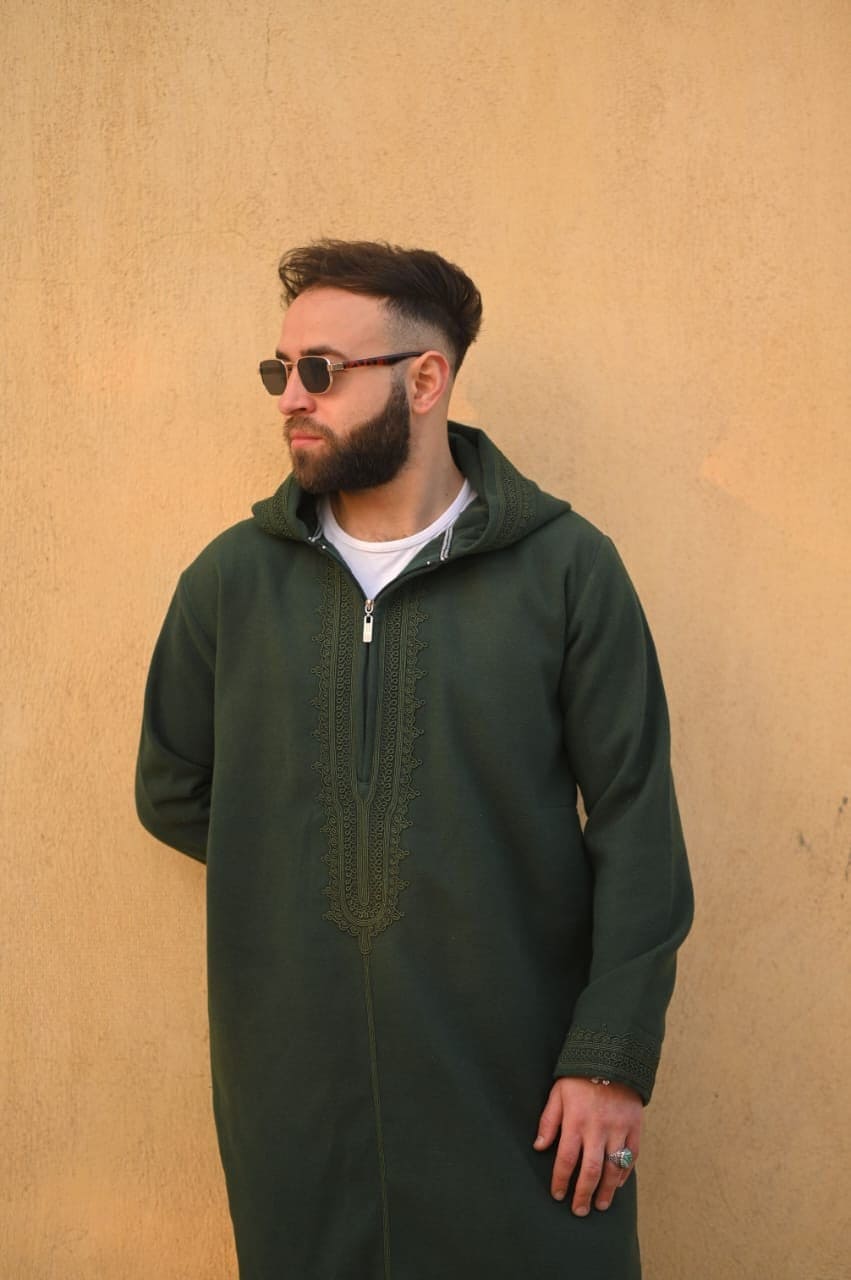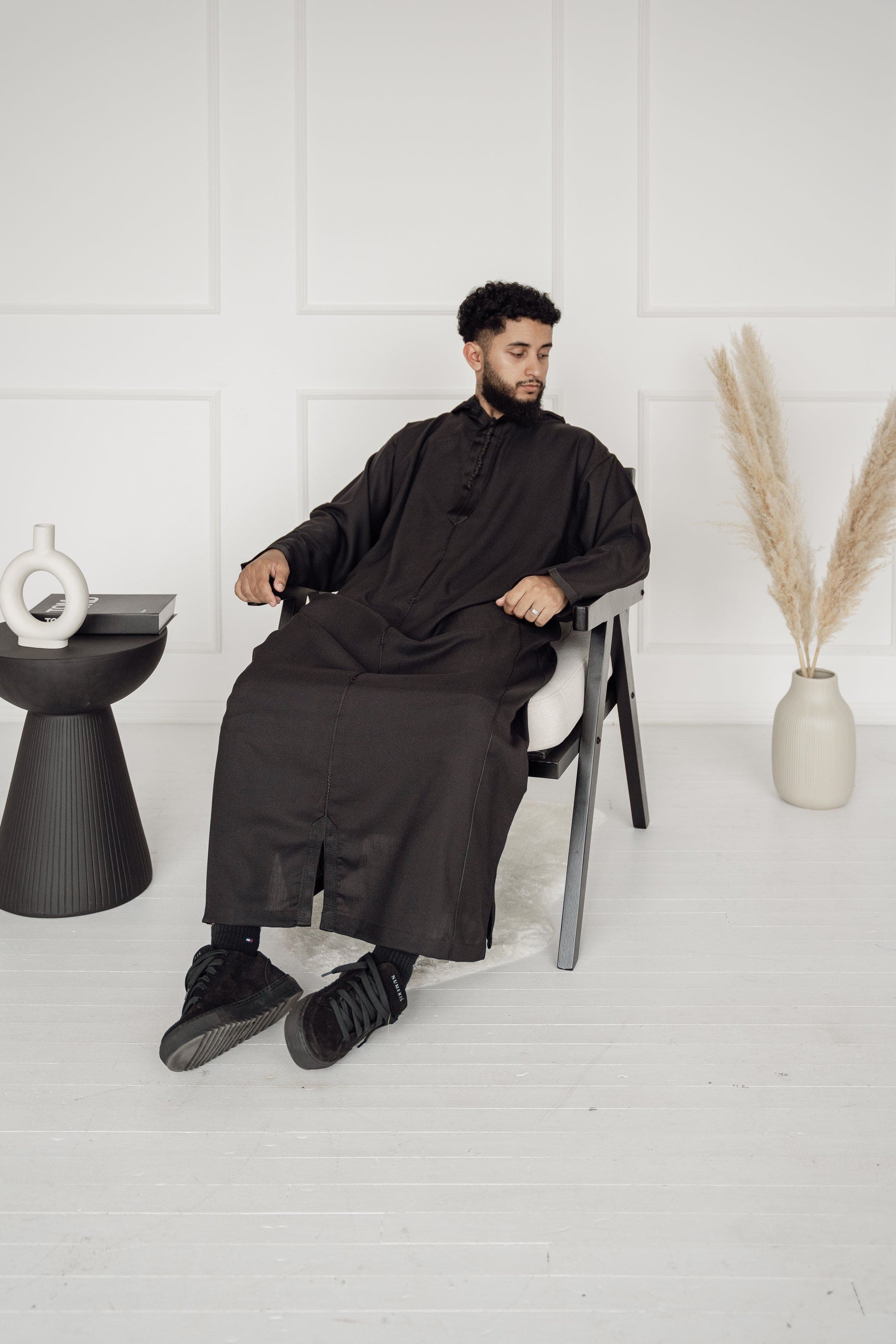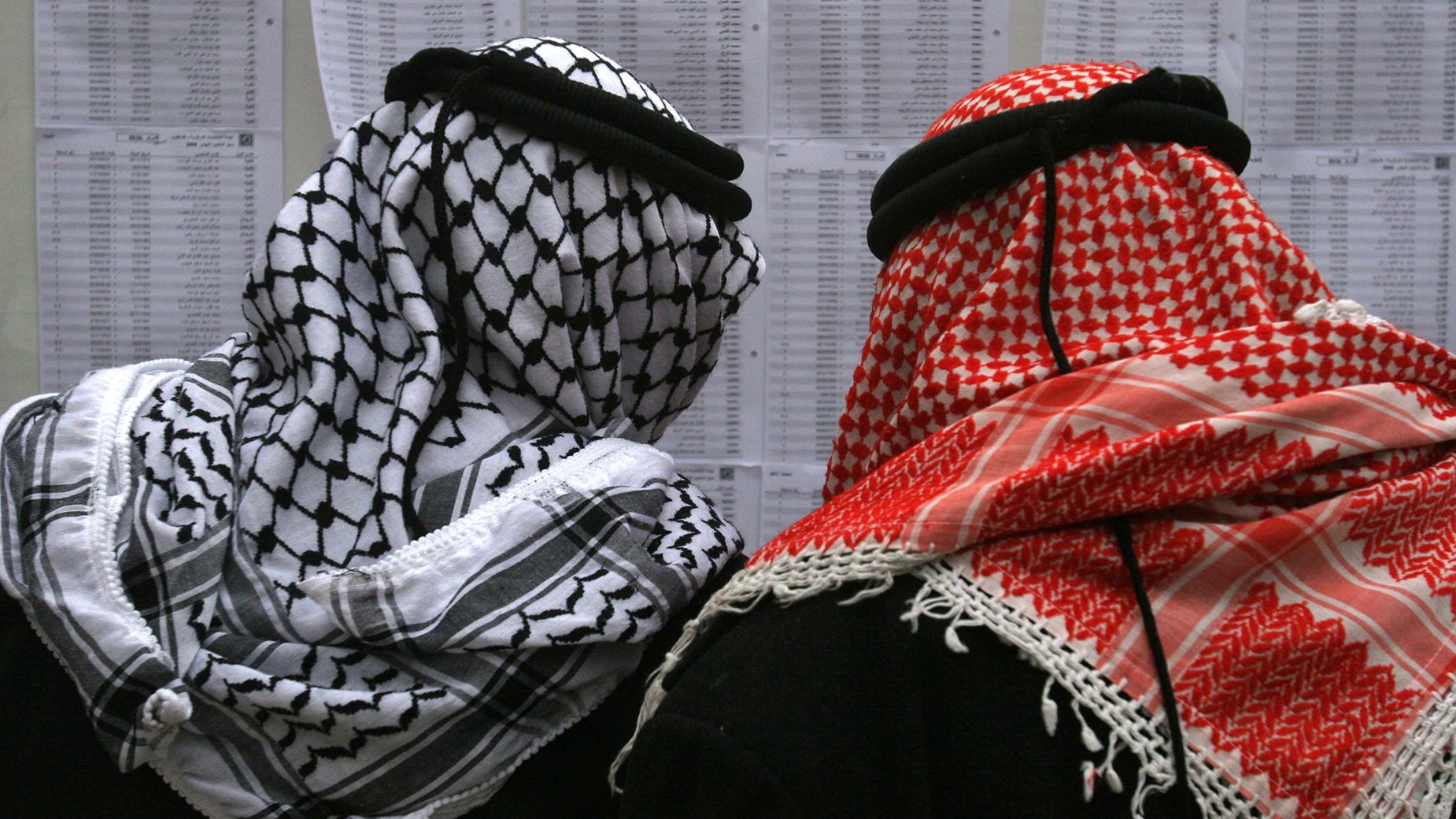If you've ever wandered through a Moroccan souk or scrolled through photos of Marrakech, you've probably spotted people wearing long, hooded robes that somehow look both ancient and effortlessly cool. That's the Djellaba, and it's having a serious moment right now.
So What Exactly is a Djellaba?
Think of it as the original oversized hoodie, but make it Moroccan. The Djellaba is a loose-fitting robe with long sleeves and a pointed hood that's been worn across Morocco for centuries. It's practical, comfortable, and honestly? Pretty stylish once you know how to wear it.
People originally wore these to deal with Morocco's wild temperature swings—burning hot days, freezing nights, desert sandstorms, mountain chills. But somewhere along the way, it became so much more than weather-appropriate clothing.
Why Djellabas Matter
In Morocco, wearing a Djellaba isn't just a fashion choice. It's tied to identity, tradition, and those big life moments. You'll see them at weddings (the fancy ones with incredible embroidery), at Friday prayers (usually white), and just around town running errands (the comfy cotton ones).
The cool part? Each region of Morocco does them differently. The embroidery patterns, the colors, the little details—they all tell you something about where the garment comes from.
Different Djellabas for Different Vibes
The Everyday Djellaba Light cotton, simple design, usually earth tones or neutral colors. This is what people actually wear to go about their day. Comfortable, breathable, and practical.
The Special Occasion Djellaba Now we're talking silk, wool, intricate embroidery, maybe some gold or silver thread. These come out for weddings, religious holidays, and important family gatherings. They're basically the fancy version that shows off Moroccan craftsmanship at its finest.
The Winter Djellaba Thick wool, sometimes lined, made for those cold mountain nights. Less about looking fancy, more about staying warm while still looking put-together.
Picking the Right One
Fabric Matters
Summer in Morocco? Go for cotton or linen. You'll thank yourself when it's 40°C outside. Winter or cooler evenings? Wool is your friend. It's really that simple.
Colors Tell Stories
White Djellabas show up at religious events—they symbolize purity. Earth tones (browns, beiges, tans) are everyday colors. Black is more formal, traditionally worn by older generations. But these days, you'll see everything from bright blues to bold patterns, especially among younger Moroccans mixing tradition with modern style.
Getting the Fit Right
Djellabas are meant to be loose, but not "swimming in fabric" loose. It should hit somewhere around your ankles, give you room to move, but not drag on the ground. The shoulders should sit comfortably, and the sleeves shouldn't swallow your hands.
How to Actually Wear One
For Women
The belt trick works wonders—cinch it at the waist and suddenly your Djellaba has shape. Pair it with statement jewelry (Moroccan silver pieces are gorgeous), and think about your shoes. Traditional leather sandals for casual, heels for dressed up. A nice handbag or embroidered clutch pulls the whole look together.
For Men
A traditional fez adds that authentic touch, especially for formal occasions. Shoes-wise, you've got options: classic babouche slippers for traditional style, or modern loafers if you're going for a contemporary look. Keep it clean and simple.
Seasonal Adjustments
Summer calls for light colors, minimal accessories, open-toe sandals. Winter means layering (yes, you can wear stuff underneath), darker colors, closed shoes, maybe a wool scarf. The Djellaba adapts to whatever the weather throws at you.
When to Wear It
Djellabas work for way more occasions than you'd think. Religious holidays and ceremonies? Absolutely. Weddings and big family events? Standard. But also cultural festivals, casual Friday outings, even just lounging at home. Some people wear them daily.
The Ramadan Connection
Here's something interesting: Djellabas absolutely blew up in the UK during Ramadan 2025. From East London to Birmingham and Manchester, to every local masjid and Islamic centre, the Djellaba went from a Moroccan traditional dress to young Muslim men's fashion icon piecewear. They were everywhere at Eid gatherings, iftar dinners, Taraweeh prayers. The combination of modesty, comfort, and that elegant look made them the go-to choice for Muslims breaking fast and attending prayers throughout the month.
And it's only going to get bigger. Ramadan 2026 starts in late February, which means winter weather. Think about it: you need something that looks appropriate for religious occasions but also keeps you warm in British February cold. The Djellaba literally checks every box. Expect to see wool and heavier cotton Djellabas dominating next year, probably in richer colors and with more elaborate embroidery as people prepare for the holy month.
The fancy embroidered ones stay reserved for special occasions, while the simple cotton versions are true everyday wear.
Making It Your Own
Want to stand out? Customize it. Add embroidery along the chest or sleeves—geometric patterns and floral designs are popular. Swap out the buttons for something unique (mother-of-pearl, carved wood, decorative metal). Add colorful trim or piping along the edges.
Even better? Find a local Moroccan artisan who can create something custom. They know the traditional techniques and can blend your ideas with authentic craftsmanship. Plus, you're supporting skills that have been passed down through generations.
Taking Care of Your Djellaba
Washing: Check the label first. Silk and heavy embroidery? Dry clean it. Cotton? You can usually hand wash with cold water and gentle detergent. Don't wring it out—just squeeze gently and lay flat to dry.
Storage: Keep it somewhere cool and dry, away from direct sunlight (colors fade). Use a padded hanger if it's heavy, or fold it carefully if you're storing it long-term. A breathable garment bag keeps dust off without trapping moisture.
Common Mistakes to Avoid: Don't over-wash it, don't iron embroidery directly (use a cloth barrier), don't store it while it's damp, and skip the harsh detergents.
Wearing It Respectfully
If you're not Moroccan but want to wear a Djellaba, that's generally fine—but know what it represents. Don't alter it in ways that make it overly revealing. Pay attention to colors and styles for different occasions (white for religious events, elaborate designs for celebrations).
Abroad, wear it with confidence but also awareness. It's cultural attire with real meaning, not a costume. Appreciate where it comes from, understand its significance, and wear it in appropriate settings.
The Bottom Line
The Djellaba has survived centuries because it works. It's comfortable, adaptable, and deeply rooted in Moroccan culture while still being relevant today. Whether you're exploring Moroccan fashion, looking for something unique to wear, or just curious about traditional clothing that actually looks good, the Djellaba delivers.
It's one of those rare pieces where tradition and modern style genuinely meet. And honestly? Once you've worn one, you get why they've stuck around this long.



